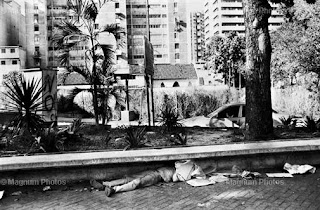
Photographer Mario Cravo Neto Dies
The body of the Bahia-born photographer, Mario Cravo Neto, was cremated in the morning of Monday, August 10, 2009, at the Garden Cemetery Saudade in the neighborhood of Brotas. The ceremony was attended by friends, family, and fellow visual artists who came to bid a last farewell to the renowned artist. Deeply upset, his family did not wish to talk to the press about the death of the photographer, who passed away of skin cancer on Sunday afternoon, August 9, at the age of 62. He was hospitalized after his condition worsened, about two weeks before he died at the Hospital of the Alliance.
Son of the sculptor Mario Cravo Junior, Mario Cravo Neto was born in Salvador on April 20, 1947. His career as a photographer began at an early age, when he was 17. In addition to recognition in Brazil for the importance of his work, the photographer took part in exhibitions in various countries around the world.In 1980 and 1995 Cravo Neto, received the award for Best Photographer of the Year from the Paulista Association of Art Critics (APCA), in 1996 received the National Prize of Photography Funarte and in 2004 the Mario Pedrosa Award from the Brazilian Association of Art Critics.Atarde on Line.
Man with Fish (1992)
Mask 10 (1993)
• We recommend reading the article: The photographic work of Mario Cravo Neto by Fernando Castro.
The body of the Bahia-born photographer, Mario Cravo Neto, was cremated in the morning of Monday, August 10, 2009, at the Garden Cemetery Saudade in the neighborhood of Brotas. The ceremony was attended by friends, family, and fellow visual artists who came to bid a last farewell to the renowned artist. Deeply upset, his family did not wish to talk to the press about the death of the photographer, who passed away of skin cancer on Sunday afternoon, August 9, at the age of 62. He was hospitalized after his condition worsened, about two weeks before he died at the Hospital of the Alliance.
Son of the sculptor Mario Cravo Junior, Mario Cravo Neto was born in Salvador on April 20, 1947. His career as a photographer began at an early age, when he was 17. In addition to recognition in Brazil for the importance of his work, the photographer took part in exhibitions in various countries around the world.In 1980 and 1995 Cravo Neto, received the award for Best Photographer of the Year from the Paulista Association of Art Critics (APCA), in 1996 received the National Prize of Photography Funarte and in 2004 the Mario Pedrosa Award from the Brazilian Association of Art Critics.Atarde on Line.
Man with Fish (1992)
Mask 10 (1993)
• We recommend reading the article: The photographic work of Mario Cravo Neto by Fernando Castro.




